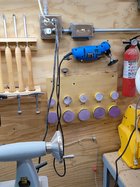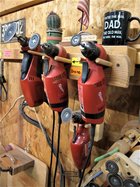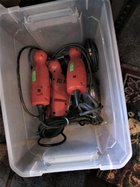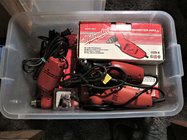I've used a Harbor Freight electric right angle drill for sanding the inside of bowls for 4 (?) years and yesterday the case near the chuck cracked. Not sure why, but that isn't important. I want to replace it with something inexpensive, but reliable, since I don't really use it a lot. I don't have a large enough compressor for a die grinder (which would be a better choice for sanding carved areas). Since I have Dewalt 20V Max batteries for other cordless tools, I could go with that right angle drill but it's a $120+, depending on where you buy it. The current Harbor Freight corded model (Bauer) is $50, but I noticed that Home Depot sells a corded model for less than the Harbor Freight drill - Genesis. Anyone have experience with either of these? Again, I really don't use it much and only use it for sanding the inside of some of my bowls.
Any other suggestions besides the two I mentioned that would be about the same price and seems to be a good buy.
Any other suggestions besides the two I mentioned that would be about the same price and seems to be a good buy.





